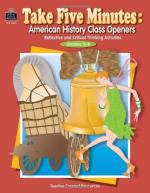|
This section contains 548 words (approx. 2 pages at 300 words per page) |

|
The growth of American cities dramatically affected American education during the last three decades of the nineteenth century. While children in the country continued to live in the age-old close-to-nature manner, city children were growing up in a largely new environment. An investigation conducted by G. Stanley Hall, then a lecturer in psychology at Harvard, showed that more than half the children entering Boston's primary schools in 1880 had never seen a plow or spade, a robin, squirrel, snail, or sheep; they had never observed peaches on a tree or growing grain and could not distinguish an oak tree from a willow or poplar. In place of these traditional experiences, the city youth were more familiar with images such as paved streets, telegraph poles, and pictures of prizefighters that came in cigarette packs. American children learning to read had completely different life experiences...
|
This section contains 548 words (approx. 2 pages at 300 words per page) |

|




